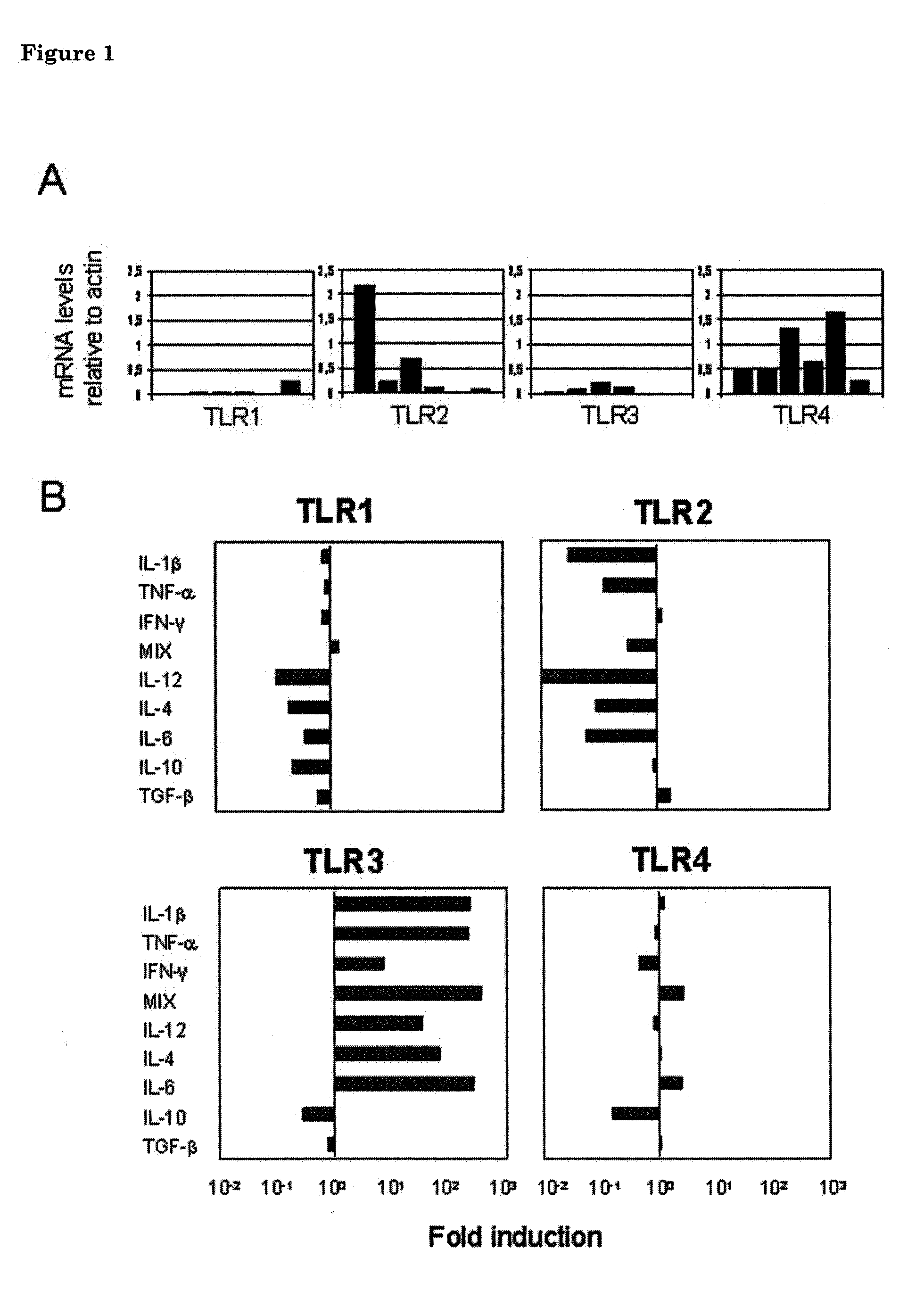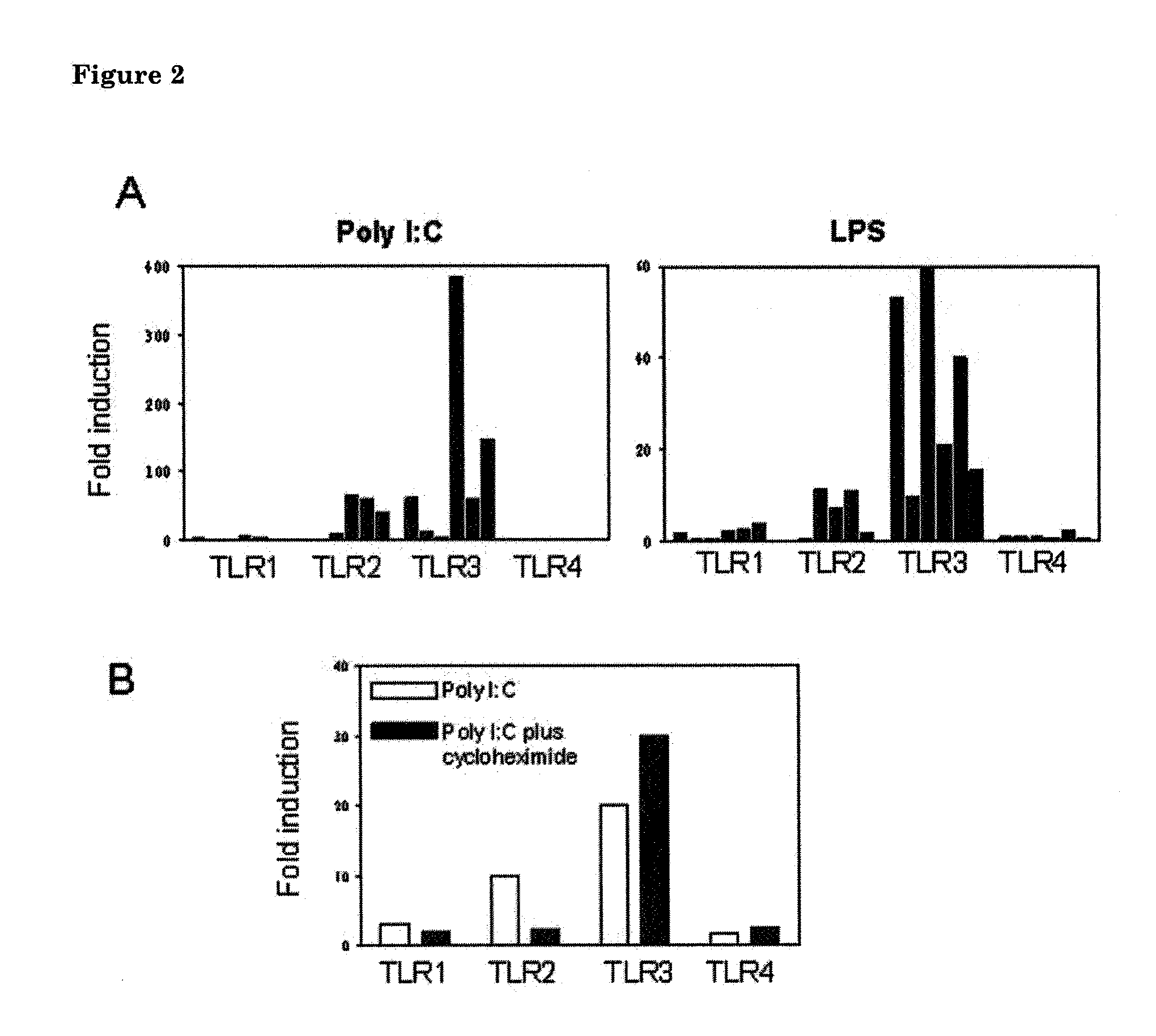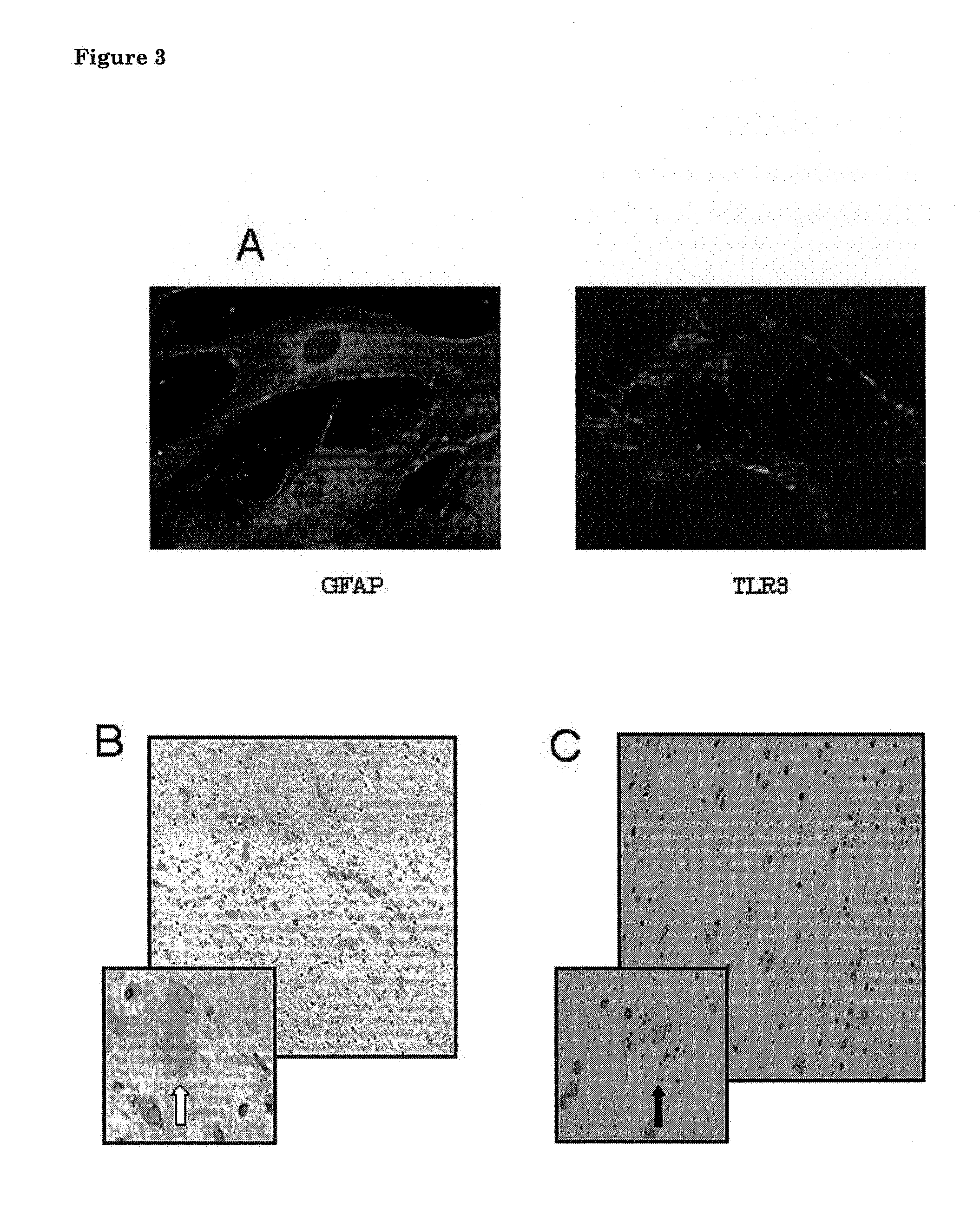Use of tlr3 agonists for the treatment of neurodegenerative disorders
a neurodegenerative disorder and tlr3 technology, applied in the field of neurodegenerative disorders, can solve the problems of ineffective treatment methods, lack of evidence-based treatment methods, and inability to fully provide a rationale for activating extracellular tlr3, and achieve the effect of enhancing production
- Summary
- Abstract
- Description
- Claims
- Application Information
AI Technical Summary
Benefits of technology
Problems solved by technology
Method used
Image
Examples
example 1
TLR3 Activation Inhibits Astrocyte Growth, Stimulate Endothelial Cell Growth and Promotes Survival of Neurons in Organotypic Brain Slice Cultures
[0148]Given the emerging differences in both expression and functionality of several different TLR family members between rodents and humans, data from rodent models for CNS disorders cannot be directly extrapolated to the human situation without additional supportive evidence. To circumvent this problem we chose to study TLR functions in cultured human astrocytes obtained from post-mortem brain samples shortly after death of a donor. Such astrocytes display many morphological and functional properties (especially in the regulation of inflammatory pathways) that are indistinguishable from human astrocytes in vivo. Cell biological features of these cultured human adult astrocytes are thus considered sufficiently representative for their behaviour in vivo in an adult human brain to provide a useful conceptual framework to build on.
Materials a...
example 2
Comparison Between the Stathmin-Induced Response by Astrocytes Isolated from Either Wild-type Mice, or TLR3-Deficient Mice
Method
[0177]Astrocytes were isolated from either newborn wild-type (Biozzi ABH) mice that express TLR3 or newborn TLR3-deficient mice that do not (Alexopoulou et al. (2001) Nature 413:732-8). Astrocytes were cultured in poly L-lysine coated 96 well-flat-bottom plates at 1×104 cells per well in 100 l DMEM / HAM-F10 medium containing 10% FCS and antibiotic supplements for 24 h to obtain post-confluent cultures. Recombinant human stathmin was next added to astrocytes, and parallel control stimuli were performed with either poly I:C, an established TLR3 agonist, or ultrapure lipopolysaccharides, established TLR4 agonists. After addition of these stimuli astrocytes were incubated for another 48 h. Astrocyte culture supernatants were subsequently collected and using a commercial ELISA kit levels of IL-6 were determined, as a marker for TLR-mediated activation of murine a...
example 3
cDNA Array Profiling of the Cytokine, Chemokine and Growth Factor Response of Human Astrocytes to Either Stathmin or Poly I:C
Method
[0179]Astrocytes were isolated from post mortem human brain tissue samples and cultured under conditions as described elsewhere in this application. One part of the culture was stimulated with 50 μg / ml stathmin, the second with 50 μg / ml poly I:C and a third was left untreated to served as a reference control. Following another 48 h RNA was isolated from each culture and 32P-labeled cDNA was prepared by reverse transcription. Subsequent hybrid selection of these 32P-labeled cDNA samples was performed on Clontech Atlas® arrays containing selective probes for 268 cytokines, chemokines and growth factors, and various receptors for these mediators. All hybridization signals were calculated as the mean of duplicate measurements, corrected for background intensity and quantified using software provided by the manufacturer. Relative signal strength was next calc...
PUM
| Property | Measurement | Unit |
|---|---|---|
| Fraction | aaaaa | aaaaa |
| Disorder | aaaaa | aaaaa |
Abstract
Description
Claims
Application Information
 Login to View More
Login to View More - R&D
- Intellectual Property
- Life Sciences
- Materials
- Tech Scout
- Unparalleled Data Quality
- Higher Quality Content
- 60% Fewer Hallucinations
Browse by: Latest US Patents, China's latest patents, Technical Efficacy Thesaurus, Application Domain, Technology Topic, Popular Technical Reports.
© 2025 PatSnap. All rights reserved.Legal|Privacy policy|Modern Slavery Act Transparency Statement|Sitemap|About US| Contact US: help@patsnap.com



